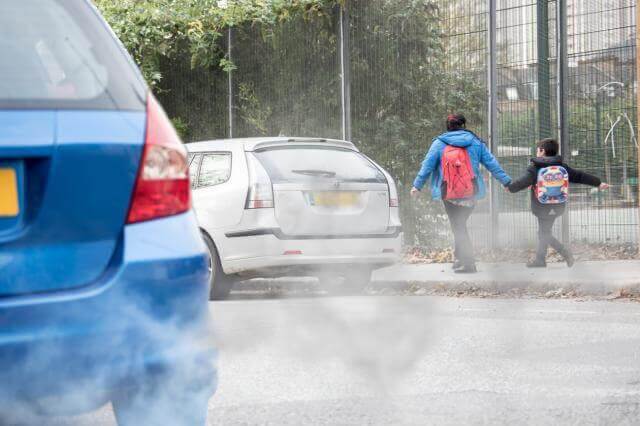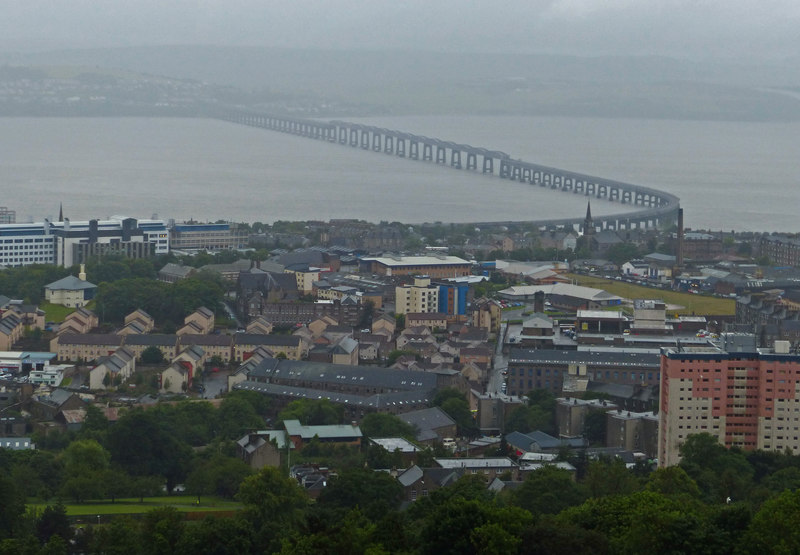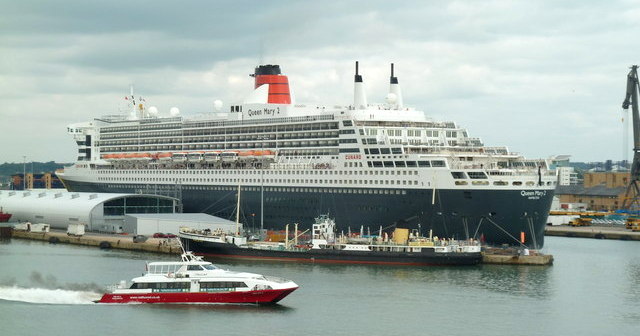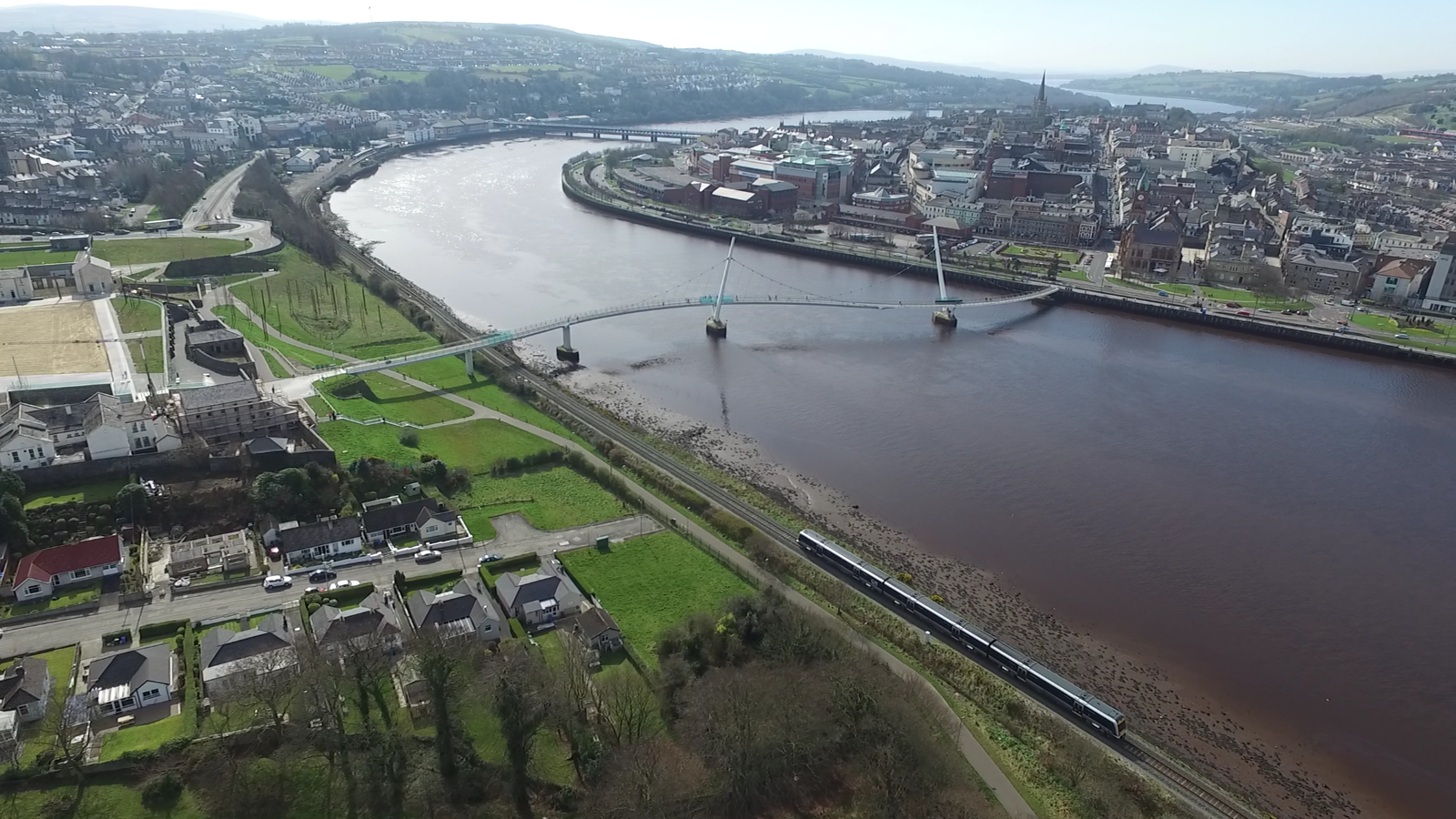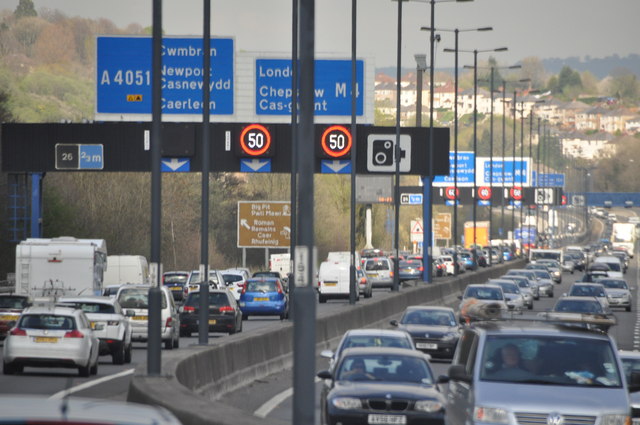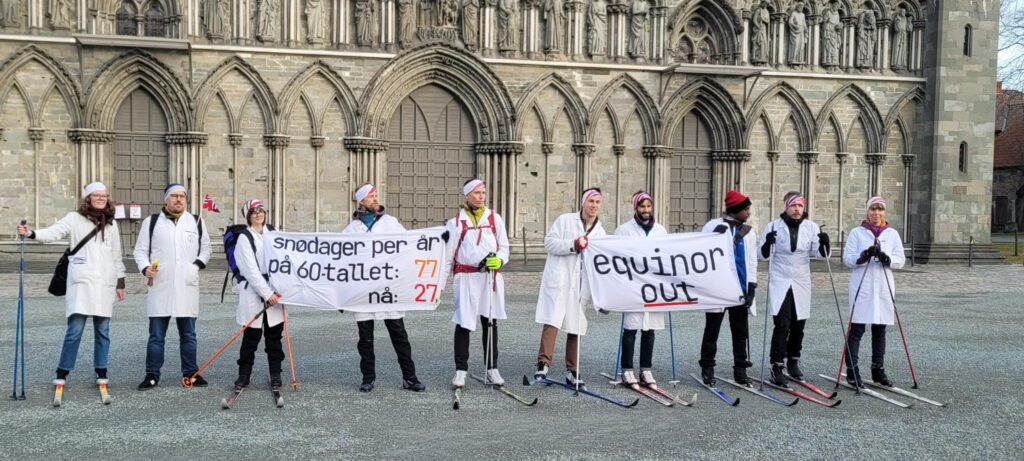You’ve probably seen the startling headlines — “Air pollution linked to spikes in hospital and GP visits”,“Air pollution causes nearly 15,000 cases of type 2 diabetes in UK each year”, “Young girl’s death first to be linked to illegal levels of air pollution”.
It’s obvious that the UK has a major air pollution problem.
Earlier this year, the World Health Organisation found 47 UK towns and cities had either reached at or had gone beyond air pollution limits. The issue has been widely covered, with the NGOs, the press and opposition politicians quick to criticise government inaction.
The backdrop to all this is the ‘dieselgate’ scandal. As far back as 2015, car manufacturers including German giant VW were accused of cheating emissions tests, with their vehicles found to be much dirtier than the companies suggested. Ever since, cars’ contribution to the UK’s poor air quality has come under deep scrutiny.
But it can’t just be cars, can it?
After three years, countless pages of analysis and enquiry and multiple court cases, policymakers must finally be getting on top of the ‘car issue’, right? Surely, something else must be driving the country’s terrible air quality?
DeSmog UK spent six months trawling through local data and air quality reports to find places where air pollution wasn’t just a road traffic problem. There weren’t many.
The problem is that almost all roads are clogged up by commuter and industrial traffic.
Nonetheless, our detailed analysis of hundreds of pages of local authority reports did throw up some examples of where local idiosyncrasies exacerbate the car problem. And councils are being asked to deal with the problem, despite lacking the resources and expertise to do so, as a previous DeSmog UK investigation revealed.
From volcanic hills to river causeways, slurry to home heating, and Russian winds to Mediterranean cruise ships, here are four cases from each of the home nations where something other than commuter traffic is creating dirty air.
Russian Winds in Dundee
Dundee, Scotland’s fourth largest city, was somewhat surprisingly the only UK-entry in Lonely Planet’s latest guide to ‘must see cities in Europe’, and was described as a “thriving, creative” place. But tourists beware: It also has a serious air pollution problem.
Scotland has stricter air pollution limits than the rest of the UK. And the whole of Dundee has been declared a special Air Quality Management Area (AQMA), with certain spots in the city regularly breaching standards.
Dundee is almost entirely urban and suburban. But it is also a hub for many inland transport routes.
It is connected to Fife by the Tay road and rail bridges. The biggest inroad for road traffic, the A92, crosses the Tay and emerges in the centre of Dundee. There is an inner ring road, the Marketgait, and five arterial routes. Many of these roads get congested, with the air pollution exacerbated by a quirk of Dundee’s topography — the city was built on top of an old volcano.

Credit: Hans Musil/Wikimedia Commons CC BY–SA 3.0
That means many of the main roads are on a gradient, causing cars to emit more as they drive up hill, with high buildings creating a roofless tunnell where the emissions accumulate.
Friends of the Earth Scotland conducted an analysis of Scotland’s road pollution, and found 10 streets continued to breach European limits. Two of those streets — Seagate and Lochee Road — are in Dundee, with both roads having nitrogen dioxide levels over the limit.
But Dundee’s air pollution problems reach far beyond its volcanic, slopey roads.
Every now and again, on a windy day, Dundee’s air pollution levels will spike significantly due to agriculture not in farms surrounding the city, but in fields in Russia and continental Europe.
Credit: Mat Fascione/Geograph.org.uk CC BY–SA 2.0
As Dundee is on Scotland’s east coast, pollution from farms in Russia and Northern Europe can travel swiftly and largely uninterrupted across the North Sea on windy days. Chemicals in fertilisers and emissions from livestock can be converted to harmful particulate matter as they travel several days over the seas to reach the Scottish coastline.
Once or more a year, this causes levels of a specific pollutant, a large particulate matter called PM10, to get so high that emissions from traffic seem comparatively insignificant.
This causes quite some headache for Dundee’s local policymakers. Not only do they have to tackle the challenge currently defeating the rest of the UK – getting people out of their cars – but they also have to compete with issues caused by an ancient volcano and Putin’s farmers, too.
Still, the council identifies road traffic emissions as “the main source of pollution in the area”, with “additional emissions from industrial sources”. Across Scotland in 2016 an estimated two thirds of car journeys were for just one person.
The city recently unveiled a fleet of 400 low emissions buses, ahead of a low emissions zone being implemented. And Dundee council is running a series of events on Clean Air Day on June 22nd to highlight the “small changes we can all make that will contribute to cleaner air”.
Cruise Ships in Southampton
Every year, 1.7 million ruddy-faced holidaymakers pass through Southampton’s port, boarding mega-ships to take them on adventures through Norway’s fjords or to the white beaches of Spain’s Costa Blanca.
Perhaps unwittingly, they’re also bringing a lot of air pollution with them.
The WHO identified Southampton as one of 17 places in the UK that was on the limit of breaching its air quality standards. Southampton Council estimates that exposure to Particulate Matter alone is estimated to contribute to 110 premature deaths each year.
Currently there are 10 hotspots in Southampton. All 10 of Southampton’s AQMAs exceeded the annual nitrogen dioxide air quality standard. Recent estimates suggest that around 60 to 70 percent of nitrous oxide emissions come from road traffic. But while congestion on the roads is the main cause of this, the port also has a significant role to play.
Southampton’s port is the busiest cruise terminal and second largest container port in the UK. Its continued success is vital to the city’s economy. But it is responsible for about seven percent of the city’s nitrogen dioxide emissions, according to local council analysis.
Credit: Chris Allen/Geograph.org.uk CC BY–SA 2.0
Analysis of activity at the docks showed ships ‘hotelling’ — using their engines while docked — was the main component of port emissions. The effects are felt city-wide; docked ships account for up to 6% of nitrous oxide emissions throughout Southampton.
Dr Matt Loxham, an air pollution toxicologist at the University of Southampton, previously told the Independent, “Cars are not the only sources of emissions in our air. Ships are more fuel efficient than road vehicles, but they use fuels which produce greater levels of emissions than road diesel”.
“This, in combination with the concentration of vessels in relatively small port areas and shipping lanes, is the reason why there is concern around shipping emissions.”
As part of an effort to clean the air, Southampton City Council has declared a number of AQMAs around some of the principal access routes to and from the Port.
But as the port grows, so will emissions. Government analysis suggests pollution from the port will increase until at least 2035.
And the port continues to sow the seeds of the country’s major air pollution foe — it is the UK’s biggest importer of cars.
Southampton does have plans to try and limit the damage from air pollution: including a mandatory Clean Air Zone by 2020 with a charge of £100 per day for heavily polluting HGVs and buses.
It is currently consulting on a new Clean Air Zone, with plans to charge the most polluting vehicles. It says that “importantly, the charges will be set at levels designed to reduce pollution, not to raise additional revenue beyond recovering the costs of the scheme”.
Slurry in Derry City and Strabane
Derry is characterised by its distinctively hilly topography. The River Foyle forms a deep valley as it flows through the city, making Derry a place of very steep streets and sudden, startling views.
Derry & Strabane District Council has eight special air quality management areas (AQMAs): the highest no. for any district council in Northern Ireland. In 2010, the council estimated that annually 339 years of life were lost due to air pollution in the area.
The AQMAs for nitrogen dioxide are mainly small areas with very localised pollution — these are busy narrow streets, often on roads with houses near to kerb. Northern Ireland was found to have the highest proportion of vehicles with a cheat device in the UK, with 20 percent of those inspected fitted with the device, compared to nine percent registered in Great Britain.
Credit: Mark McGaughey/Wikimedia Commons CC BY–SA 4.0
Where there are AQMAs for PM10 in the area, it’s normally due to emissions from domestic fuel burning. Many use wood, gas or oil to fuel their heating systems. Derry’s cold, calm weather conditions exacerbate the problem.
The city is also surrounded by agriculture, which brings more unusual problems.
In 2017, the Northern Ireland Environment Agency (NIEA) recommended the rejection of plans for a farm with around 60,000 pigs in the area. It said it wanted further detail on how nitrogen deposition from ammonia emissions might impact sites around the facility and in areas where slurry would be spread.
A government report from December 2017 described how ammonia emissions can cause health problems by reacting with other molecules in the atmosphere to form compounds that are precursors to particulate matter.
A working group for Northern Ireland’s Department of Agriculture found that about 91 percent of the country’s ammonia emissions came from agriculture. It said the issue of reducing these emissions had started to cause delays in agricultural planning applications.
The WHO found Derry’s particulate matter emissions to be just above safe levels in May 2018. There’s no space for complacency however, as air pollution from a car-use culture persists at above-safe levels.
The local authority is making efforts to improve — some obvious, some a little more creative.
In 2016, then Environment Minister Mark Durgan announced that Derry would be one of ten councils in Northern Ireland to receive additional funding to tackle air quality.
The funding will enable councils to continue monitoring air pollution, including funding for staff and equipment.
Derry City and Strabane district council was awarded £24,206, the second highest amount in the UK after Glasgow.
And in February 2018, Derry announced The Life Tree project, where every birth, death and marriage will be marked by planting a tree in a bid to cut air pollution.
M4 Brings More Pollution to Newport
Newport — you’ve probably driven through it.
And that’s precisely the problem.
Newport is the third largest city in Wales, with a population of just over 140,000. There has been a steady decline in heavy industry over the past three decades resulting in the gradual replacement of industrial buildings with new residential housing.
The most significant single source of air pollution in the authority is the thing Newport is probably most famous for — the M4 motorway — that transects several of Newport’s residential suburbs.
There are currently nine air quality management areas in Newport. They are all small, and along stretches of road. Four of the nine relate to pollution from the M4. Newport Council is expecting an increase in traffic when the toll on the M4 bridge is dropped in January 2019.
Credit: Lewis Clarke/geograph.org.uk CC BY–SA 2.0
Pollution levels are particularly high at Junction 25 of the M4. Just behind a bank of vegetation lies a stretch of housing and a secondary school.
A relief road is being considered by Welsh Government. The new route, once completed, should generally improve air quality by diverting traffic away from particular hotspots.
But the build-time for that road is expected to be around four years. Ironically, the construction of the road would likely worsen pollution during that time.
If anywhere is proof that road traffic is the problem, it’s Newport.
A council spokesperson told the South Wales Argus in November 2017, when the World Health Organisation highlighted the city’s illegal levels of air pollution:
“The city’s road network has developed over hundreds of years and been adapted to accommodate an ever increasing number of motor vehicles.
“Data from the Department for Transport indicates a 17 per cent increase in road vehicles in Newport over the last 15 years.
“In most cases little can be done to the road network, given the current traffic volumes. Ultimately, to improve air quality, the volume of road vehicle traffic needs to be reduced.”
Credit: Editor5087/Wikimedia Commons CC BY 3.0
There’s clearly no easy solution. Cars need motorways and the M4 is and will remain one of the UK’s main arteries, pumping exhaust pipes through Newport.
But at least local authorities and the Welsh government are starting to take the issue seriously.
In January 2018, Newport City Council announced four new air quality management areas, which it said in a statement showed “the council’s commitment to improve the environment and wellbeing of the city”.
And in April 2018, Wales’ Environment Minister Hannah Blythyn announced a £20 million package of measures to improve Wales’ air quality. The announcement came after the Welsh government was taken to court by environmental lawyers Client Earth in January.
At the High Court hearing, the government admitted its plans were insufficient and pledged to work with experts to formulate an effective strategy.
One of the Welsh government’s new proposals is for a clean air zone between Junctions 25 and 26 on the M4, with a 50mph speed limits expected to reduce emissions by up to 18 percent.
Road to Zero
So the problem is road traffic.
Pretty much every official DeSmog UK spoke to made this point: If road traffic could be alleviated, better air quality is a given.
But that’s a big ask. Getting people out of their cars requires investment in better public transport and road networks. It requires a plan to make petrol vehicles cleaner and, ultimately, electric.
The national government has been slow to take the lead.
It’s ‘Road to Zero’ strategy, launched in July 2018, promises policies to ensure all new cars are “effectively” zero-emissions by 2040. But critics say that in the context of the UK’s air quality crisis, that’s simply not soon enough.
Reacting to the plan, Jon Lamonte, chief executive of Transport for Greater Manchester told Air Quality News:
“The government’s road to zero strategy is heading in the right direction, but at the wrong speed. We need to act far sooner than 2040 to ban conventional vehicles if we are to improve air quality within our cities. The lack of incentives to discourage people from using conventional cars – particularly diesel vehicles – will also make it more difficult to reduce emissions.”
Official government advisor, the Committee on Climate Change, also criticised the plan for failing to provide enough clarity on how the UK would actually transition to a low carbon transport, saying the plan fell “short of expectations”.
There are some problems local authorities simply can’t solve — from Volcanic topography to the direction of polluted winds. There are others that government can address, however — like getting people out of dirty diesels into freshly charged EVs.
But progress is slow. And while the public waits, the smog thickens.
Main image credit: British Lung Foundation
Subscribe to our newsletter
Stay up to date with DeSmog news and alerts


